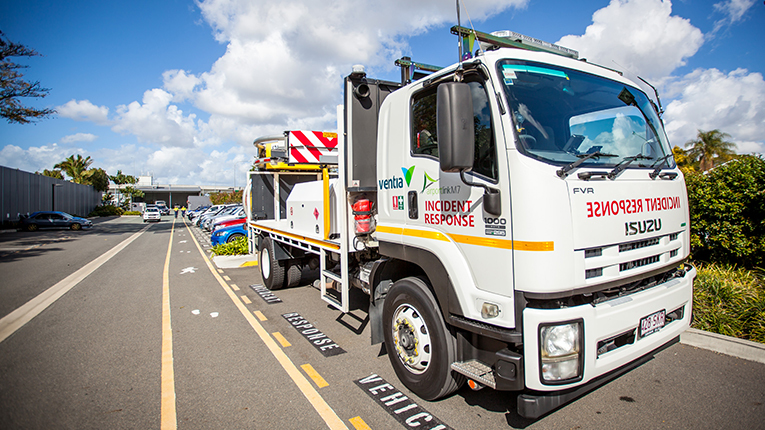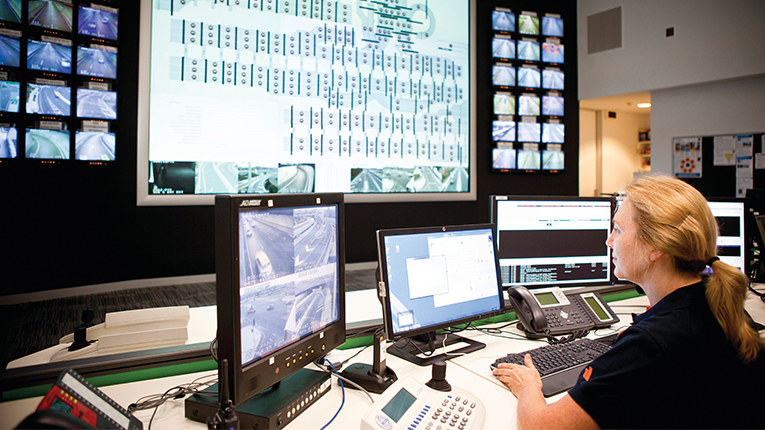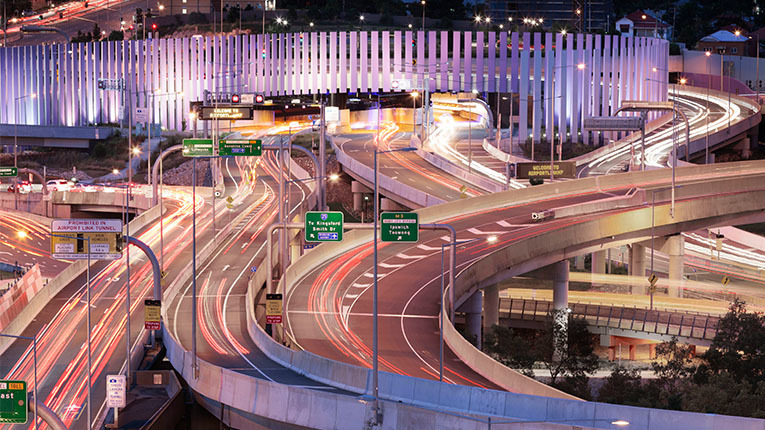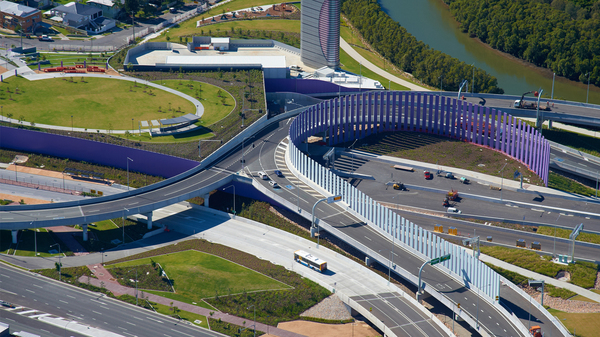From 2012 to 2018, Ventia provided operations and maintenance services to Brisbane's AirportlinkM7. The AirportlinkM7 includes 6.7km of twin tunnels, forming part of the M7 Motorway, connecting Brisbane's central business district and the Clem7 to the East-West Arterial Road, leading to Brisbane Airport.
The services we provided included:
- Project management
- Traffic and incident management
- Emergency management
- Safety, health and environment management
- Quality training
- Asset maintenance in accordance with Code of Maintenance Standards
- Subcontractor management
- Legislative compliance
- Administration and finance management
- Stakeholder engagement
- 24/7 traffic control room operations

Enhancing asset management capability
In 2016, the AirportlinkM7 contract saw Ventia become the first infrastructure services provider in Australia to successfully achieve International Organisation for Standardisation (ISO) 55001 certification for a large infrastructure project.
The primary objectives of the ISO (recognised by the United Nations and the World Trade Organisation) are to create international standards for asset management best practice that reduce the need for national standards. ISO 55001 focuses on helping develop a proactive lifecycle asset management system, which supports asset optimisation and reduces the overall cost of ownership, while helping meet the necessary performance and safety requirements.
During the term of our contract, we enhanced our asset management capabilities to ensure contractual compliance through:
- improved quality assurance
- meeting safety and performance requirements
- training and upskilling more than 50 staff in strategic and fundamental asset management
- development of a new Strategic Asset Management Plan
- implementation of an operational review process to provide a holistic asset analysis
- improved communications between project staff, subcontractors and suppliers
- exceeding KPIs for the length of the contract
- a network approach to incident response services.

Excellence in service delivery
Our team was proud of its track record for service excellence, where we built on our client's reputation with their customers by enhancing their commuter experience.
From 2012 to 2018, we responded to almost 15,000 incidents on the AirportlinkM7 and reduced incident response time by 25 per cent.
This was achieved by the roll out of equipment/plant modifications and relocation, as well as training sessions for our team held with Queensland Emergency Services. The sessions focused on training staff in small compartmental firefighting, critical incident management and creating greater efficiencies in our plans and processes.
Using technology to deliver new ways of working
We used the latest technology to deliver new and innovative ways of working with our people, our clients and the community.
At the time, our AirportlinkM7 team was also one of the few incident response crews in Australia that utilised a new piece of training technology called Virtual Emergency Simulation Training (VEST).
The VEST system took our workers through a 'real-life' virtual incident response scenario, set in the familiar road, tunnel or open road environments they worked in. As part of the simulation our people used a game controller to navigate various challenging situations involving road users, and the different phases of incident management - detection, notification, verification, response, report and review.
Scenarios included vehicle collisions, chemical spills, fire incidents, lost loads, cyclists and more. A total of 68 VEST sessions were held with our team. The interactive training model allowed our management and key operational people to better understand how we operate, how we could improve and how we could make sure our services to our client and their customers was first class.
Safety and health above all else
Safety is a core value at Ventia, and is embedded in everything we do.
Our AirportlinkM7 team was a leader in developing workplace health and wellbeing, with an engrained safety culture among all our people and experienced zero Loss Time Injury (LTI) between 2012 and 2018.
This was mainly attributed to their award-winning Zero Harm program, which began in 2015, and was recognised the following year as the 'Most significant improvement to work health and safety performance' at the Queensland Work Safe Awards.
The overall goal of the workplace health and wellbeing initiative was to create a healthy supportive environment, one that fostered good working sustainable relationships integral to networking and achieving and exceeding the requirements of the business's objectives.
A range of initiatives covering five focus areas were integrated to achieve the goal of delivering a safe and healthy workplace:
- Diet: weight loss, healthy eating, research and development, workshops
- Health: tests and vaccines, speaker presentations, environment monitoring, resources, fruit provided in lunch room
- Mental health: awareness campaigns, events, training, speaker presentations
- Exercise: challenges, training sessions, Fit-bits for staff
- Home: fire safety and first aid resources and training
The results of the program included a transformation of staff behaviour on site, with people bringing in healthy eating options for their breaks, increases in physical activity, a demonstrated declining trend of leave (inclusive of all leave types) and zero LTIs.
Taking responsibility for sustainability
We are committed to building a sustainable business that also keeps our promise to create shared value for our people, clients, communities and investors.
During the AirportlinkM7 contract, one of the environmental initiatives we undertook was to change the method used when monitoring and reporting upon the asset's tunnel ventilation system.
We identified that the existing automatic ventilation system was over-powered and over-ventilated due to a configuration for higher traffic volumes in non-peak times, and as a result was consuming unnecessary excess power equivalent to that of powering 500 houses i.e. the township of Roma, Queensland!
After extensive team training sessions and trialling key system improvements, our Tunnel Control Room Operator team switched from the automated control system to conducting manual ventilation of the tunnel in non-peak times. The result was the use of just six fans as opposed to 30 and a considerable 15 per cent reduction in the carbon footprint.

